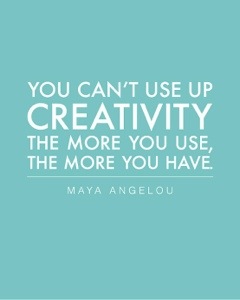In 1939 James Webb Young, an advertising executive created the “Technique for Producing Ideas.” While this list may be older than anyone reading this blog, the concepts are not only still relevant…they actually work.
Every week in our churches we are trying to come up with ideas. Every creative team has felt the tension of sitting in a meeting and being asked to produce ideas on demand.
Here are the 5 steps and a few thoughts on how we might be able to use these in our environments:
Gathering Raw Material – Keep your antenna up. Always be on the hunt for things that move you creatively. Look for interesting images, headlines, sounds, movie clips, visuals, articles, smells, and experiences. “Instead of working systematically at the job of gathering raw material we sit around and hope that inspiration strikes” says Young. And as we know creativity rarely strikes.
When our ministries or communicators come to us with a scripture verse or theme if we have not created a stockpile of ideation tools we won’t have anything to talk about. The awkward silence that fills the room is defining. Use Evernote, your phone, twitter, any resource necessary to catalog ideas so that you are prepared to have a conversation.
Digesting the Material – Revisit what you collect. Calendar some time for you to go back and look at what you collected. Don’t be afraid to edit what you have collected. Some things you thought might work, wont and other things you were worried about will become amazing. Young says, “This part of the process is harder to describe in concrete terms because it goes on entirely inside your head.” Revisiting the art will help us find new ways to use old stuff. The things we found change over time as our experience and context change and the filter from which we review the data.
Unconscious Processing – Walk away. Young says: “When you reach this third stage in the production of an idea, drop the problem completely and turn to whatever stimulates your imagination and emotions. Listen to music, go to the theater or movies, read poetry or a detective story.” Stepping away creates space and context for ideas to grow.
The A-ha! Moment – Finding A-Ha moments require space and silence. Getting rid of distractions gives our minds space for ideas to come alive. Prayer is also a huge part of this equation. When we get alone and pray this times is a space our brains can focus on what they have been processing, not what is in front of us right now.
Idea Meets Reality – According to Young, “You will find that a good idea has, as it were, self-expanding qualities. It stimulates those who see it to add to it. Thus possibilities in it which you have overlooked will come to light.”
Often times this happens in community.
The goal of our ideas is to move the message forward, not to be cool. Cool can be a bi-product of what we do but should never be the focus. Connection and the forward progress of momentum are the goals…helping to make the message digestible and sticky.
We need you and your ideas. They are vital to the future growth of everything we do. You can be the catalyst for change and the engine for excellence inside of our churches and organizations. We need you, we respect you, we value you and your ideas. They matter. You matter. Lets make history!





I love the idea of keeping a catalog of ideas…been trying to implement that in regards to ideas for blog posts.
Dude this was incredibly timely. I just started at a new church as one of their designers & was immediately thrown into creating more pieces in a shorter amount of time simply due to this being the 2 or 3 of the busiest weeks of the new year prior to Easter. I’ve been working with the step just out of order.
Thanks man.
TRULY WRITTEN FOR SUCH A TIME AS THIS! I am just starting a new job as Creative Arts Director at the same Church I’ve been the Worship Pastor at for TWELVE YEARS! Excited, nervous, energetic, apprehensive all mixed wit the “HERE WE GOOOOO…” willingness. Love your blog and your heart! Thanks for spurring us on!
Through ongoing self-analysis he is continually refining and improving the efficacy of his own
gravity and advancing force. Their men will now be the team to beat in Rio after bringing home
two golds from London, including the final where a hapless Zhitkeyev was the victim of
a bully. According to a March 11 report from Bleacher Report,
Michelle” women self defense Hottie.
I do trust all of the ideas you’ve introduced on your post. They are really convincing and can certainly work. Still, the posts are very quick for newbies. May just you please lengthen them a little from next time? Thanks for the post.